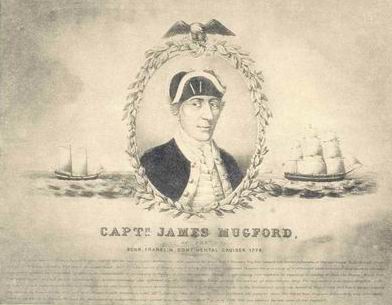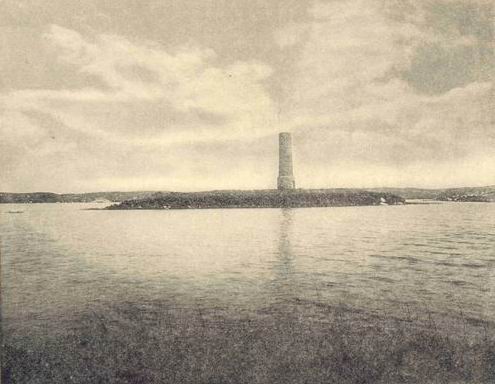|
1999-2003 (Return to Web Text-ures) |
Click Here to return to |
|
1999-2003 (Return to Web Text-ures) |
Click Here to return to |
BARTHOLOMEW GOSNOLD, THE FIRST ENGLISHMAN TO SET FOOT ON NEW ENGLAND SOIL
A small bark called the “Concord” with only thirty-two persons on board set sail from Falmouth, England, in 1602, with the object of making a permanent settlement in New England. It was agreed that twelve of the explorers should return and that the remainder should stay. Bartholomew Gosnold was the leader of the expedition and with him were several mariners who had gone to Virginia with Sir Francis Drake in 1585. It was not surprising therefore that the little ship made a very quick voyage, touching first at Cape Ann and then sailing around Cape Cod, which Gosnold called by this name on account of the abundance of fish. He then sailed past an island which he named Martha’s Vineyard, now called No Man’s Land, and which he reported as being full of deer. To Gay Head he gave the name of Dover Cliff, and continuing his journey the expedition landed on Elizabeth’s Isle, now called Cuttyhunk, and here it was decided to start their settlement, the first in New England. The name Elizabeth now refers to the whole group of islands. Here part of the crew landed and built a small stone house or fort for comfort and for protection against the Indians. From here Gosnold visited the mainland, probably at New Bedford, twice landing at Naushon, where he sowed grain and noticed many deer. There were many dissenters in the little colony, and three weeks had barely passed when the “Concord” hoisted anchor and sailed for Exmouth, England, where she arrived “without one cake of bread, nor any drink but a little vinegar.” Gosnold joined the Jamestown expedition in 1607, Captain John Smith also being on the same voyage. Gosnold died the same year in Jamestown and was buried there.
The Gosnold Memorial Committee celebrated the three hundredth anniversary of Gosnold’s landing at Cuttyhunk by laying the cornerstone of a memorial tower near the place where he landed. The Boston men on the committee who were present at the exercises were F. E. Abbot, Edwin D. Mead, and G. G. Williams.

CAPTAIN JAMES MUGFORD, A HERO OF OUR REVOLUTION.
The inscription in fine type on this Cut reads as follows:
One of the heroic men with Thomas Russell ist Lieut. and 19 Officers and men from Marblehead who captured the armed British Transport Ship Hope Ladened with Powder, implements of War and Pioneer Tools, destined for and in sight of the British Admiralty Fleet then in Nantasket Roads Novr 1775. The scarcity of Powder was severely felt by the Continental Congress the procuring of it attracted their particular and constant attention, every encouragement had been held by them to the inhabitants of the Country, to engage in the manufacture thereof, no opportunity was neglected in importing, or seizing it from the Enemy. — March 1776 Genl Washington entered Boston in triumph, the British evacuated and embarked, and lay in Nantasket Roads waiting the arrival of their Powder Ship — The enterprising and heroic Mugford, with Officers and men captured said Ship and transfered her with Cargo to the United States Commissary Genl and Quarter Master, by the Continental Agent, Col. Jonathan Glover. This was One of the most valuable prizes during the Revolution, the principal and interest to 1854, Amounts to 1,349,343 15/100 Dollars! this and similar events produced the general voice — “We will be free.” Congress deliberately and solemnly decided to declare it to the world; and the Declaration of Independence was agreed to in Congress on the 4th of July 1776. Who can estimate the real value of that capture?

From a photograph.
GOSNOLD MEMORIAL.
The
Gosnold Monument is on a small island in a pond in the larger island of
Cuttyhunk.
Gosnold is the name of the near-by town which embraces all the Elizabeth
Islands.